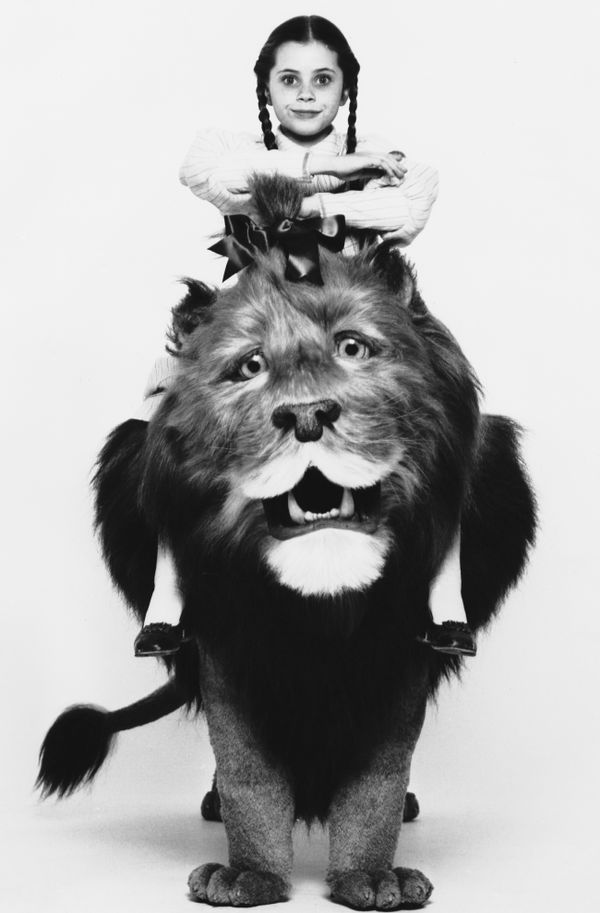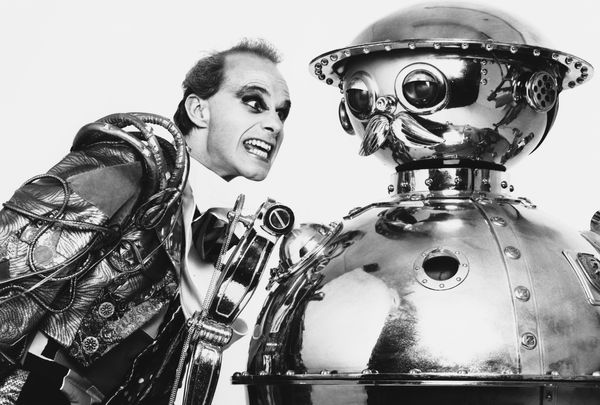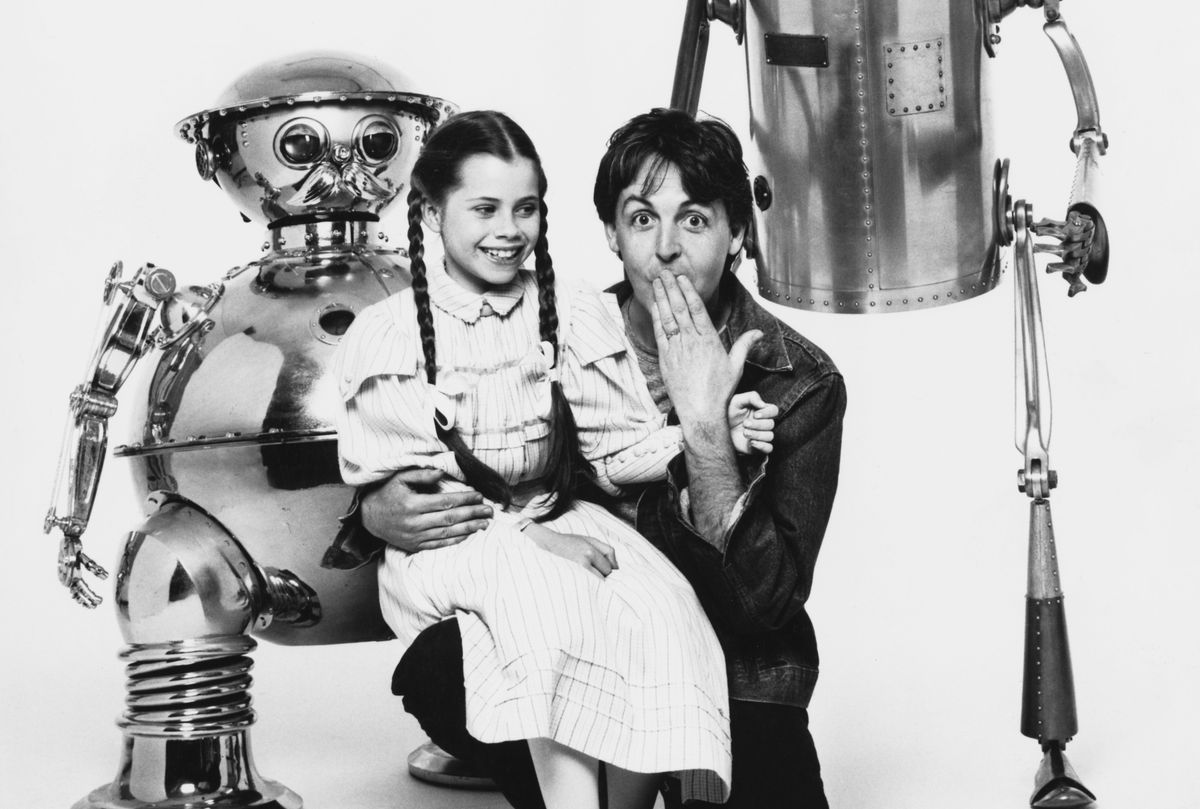A few weekends ago, everyone in my household was gone and I had a couple nights alone. Ordinarily when I have the house to myself, I cook a nice dinner, write and then watch my guilty pleasure: cheap horror films, the more over-the-top the better, the kind no one else will sit through with me (OK, my son usually will, having inherited my love for the genre). But I was sick. Sick again. Sick still.
Like millions of people worldwide, I contracted COVID. And like an estimated 1 in 5 Americans, I don't seem to be getting much better. The weeks have stretched on and on with a headache, brain fog and insomnia due to the pain. I needed a comfort watch and was delighted to discover Disney+ and other streaming services had "Return to Oz" available, a favorite from childhood.
I put it on, the cat settled in next to me in bed – and I was shocked to see myself on the small laptop screen, to recognize my own struggles again and again in this campy classic from 1985. "Return to Oz" speaks to long COVID the way few films have since or even before the pandemic, its characters, fantastical though they may be, struggling with cognitive issues like memory and speech, wrestling with forgiving themselves and most of all, being believed.
The Walter Murch-directed film is an unlikely classic. A dark fantasy along the lines of "Labyrinth," another longtime personal favorite, it uses L. Frank Baum's books "The Marvelous Land of Oz" and "Ozma of Oz" as its source material. Billed as an "unofficial sequel" to that most classic of films, Metro-Goldwyn-Mayer's 1939 sweeping "The Wizard of Oz," "Return" introduces a young Fairuza Balk in her first film role as Dorothy Gale.
Set a short time after the tornado in the original story that upended life in Kansas and destroyed the Gale's farm, sending young Dorothy to Oz (or so she thought), "Return to Oz" finds Dorothy unable to forget her magical adventures or friends. Her Auntie Em (Piper Laurie) is concerned, more than borderline annoyed, that the girl keeps having these daydreams — and meanwhile, is unable to sleep through the night.
Here's where I first sat up in bed. My insomnia, caused by COVID, has been so bad and so utterly strange to me, my doctor prescribed a prescription sleeping pill at night, the first such medication I've taken. I've spent hours staring up at the ceiling, begging my body to just go to sleep. So has Dorothy, apparently.
On many levels, "Return to Oz" is first and foremost, a film about gaslighting. Dorothy is disbelieved by the medical establishment.
Aunt Em is fed up and decides to take the child to a distant town to try an experimental medical procedure designed to end Dorothy's "bad dreams" once and for all. That procedure seems pretty much to be electroshock therapy, utilizing this newfangled thing called electricity. On many levels, "Return to Oz" is first and foremost, a film about gaslighting. Dorothy is disbelieved by the medical establishment — including an arrogant doctor and a sadistic nurse (Jean Marsh, who in "Oz"-style also plays Princess Mombi) — and by her own beloved family. No one in the real world trusts the girl, that she experienced what she swears she did.
 Fairuza Balk poses atop the Cowardly Lion in a publicity still for the film "Return to Oz," 1985 (Richard Blanshard/Getty Images)Sounds an awfully lot like the ongoing stories of many people with long COVID who must fight a battle even to be diagnosed, let alone attempt to be treated. My symptoms were first thought to be that of a stroke (which can be caused by COVID, even in young people), but at least they weren't brushed aside as "just a cold," which has happened to many. The dismissal of people with long COVID has been called "The great gaslighting" by The Guardian, and some believe it's bringing medical gaslighting and ableism into greater public awareness and conversation.
Fairuza Balk poses atop the Cowardly Lion in a publicity still for the film "Return to Oz," 1985 (Richard Blanshard/Getty Images)Sounds an awfully lot like the ongoing stories of many people with long COVID who must fight a battle even to be diagnosed, let alone attempt to be treated. My symptoms were first thought to be that of a stroke (which can be caused by COVID, even in young people), but at least they weren't brushed aside as "just a cold," which has happened to many. The dismissal of people with long COVID has been called "The great gaslighting" by The Guardian, and some believe it's bringing medical gaslighting and ableism into greater public awareness and conversation.
The parallels continue between long COVID and "Return to Oz." Dorothy escapes the grim hospital and finds herself in Oz again, the land much changed. The yellow brick road is ripped up, and the city of Oz is in ruins with its citizens turned to stone. (Me too, Dorothy.) One of the first characters the girl encounters is Tik-Tok (voiced by Seán Barrett), a roly-poly mechanical man. Tik-Tok, once a defender of Oz, is frozen in place because his action has wound down. Dorothy winds him back up again. He has thinking, speaking and walking/action keys.
Both Tik-Tok and Jack say the wrong words. They struggle to understand and to be understood.
This may be the best metaphor I've seen for long COVID, or any chronic illness, in a long time. Tik-Tok is strong and smart, but his gears wind down. He can't move if his walking/action is depleted. He can't think or speak clearly if those actions have run out. He has limited "energy" which must be conserved and protected and the others must remember to help him.
My headaches worsen in the evening, as many illnesses do, and I've learned I have to do my best thinking in the morning (so much for my former habit of writing late at night). Anyone with chronic illness is likely familiar with spoon theory, the idea that one only has so many spoons per day and once you use them up, they're gone until you can rest again, recover and get some spoons back.
 American actor and puppeteer Pons Maar (left) as the Lead Wheeler with the metallic Tik-Tok in the film "Return to Oz," 1985 (Richard Blanshard/Getty Images)But Tik-Tok isn't the only character with cognitive issues. Jack Pumpkinhead also struggles. Jack, voiced by the great Brian Henson, is an awkward stick figure with, as expected, a jack-o-lantern for a head who was brought to existence thanks to the evil Princess Mombi's Powder of Life.
American actor and puppeteer Pons Maar (left) as the Lead Wheeler with the metallic Tik-Tok in the film "Return to Oz," 1985 (Richard Blanshard/Getty Images)But Tik-Tok isn't the only character with cognitive issues. Jack Pumpkinhead also struggles. Jack, voiced by the great Brian Henson, is an awkward stick figure with, as expected, a jack-o-lantern for a head who was brought to existence thanks to the evil Princess Mombi's Powder of Life.
Both Tik-Tok and Jack say the wrong words. They struggle to understand and to be understood. At multiple times in the film, when Tik-Tok's speaking action has run out, he speaks in gibberish, then stops speaking at all. I never thought something even remotely like that would happen to me and I never thought I would witness it reflected onscreen so achingly realistically. Long COVID brain fog has caused me, and millions of others, to fight to find the right word sometimes, to fight to find any word. It's a battle to remember, a war some days even to reach out and communicate.
One of the most powerful lessons of the film is to forgive ourselves and whatever may have happened to us.
Bodies fail in "Return to Oz." Bodies break down. Bodies are brittle sticks and rusty, neglected, cobwebbed metal and in the case of the Gump (voiced by Lyle Conway): a moose-like trophy head lashed to mismatched furniture with ropes that don't hold. He can't keep himself together. His character ends the film being carried, but people are there to support him. Like the original "Wizard of Oz," friends are the backbone of the film. So is knowing you're not alone even or especially in your most difficult times.
Want a daily wrap-up of all the news and commentary Salon has to offer? Subscribe to our morning newsletter, Crash Course.
If you are experiencing long COVID, I do think "Return to Oz," is a comfort, not just a reminder or a strange case of prophetic storytelling. Because Dorothy is wise beyond her years and the number one thing she urges her friends is patience, understanding. One of the most powerful lessons of the film is to forgive ourselves and whatever may have happened to us. "It's OK, Jack," she says soothingly as the ragtag group is literally falling out of the sky. "It can't be helped now."
And when Dorothy is finally reunited with those magical ruby slippers, one of her last wishes is a wish not for herself, but unselfishly for all of us — a wish I wish now too, "for the Emerald City and all the people in it to be restored to life."

Shares